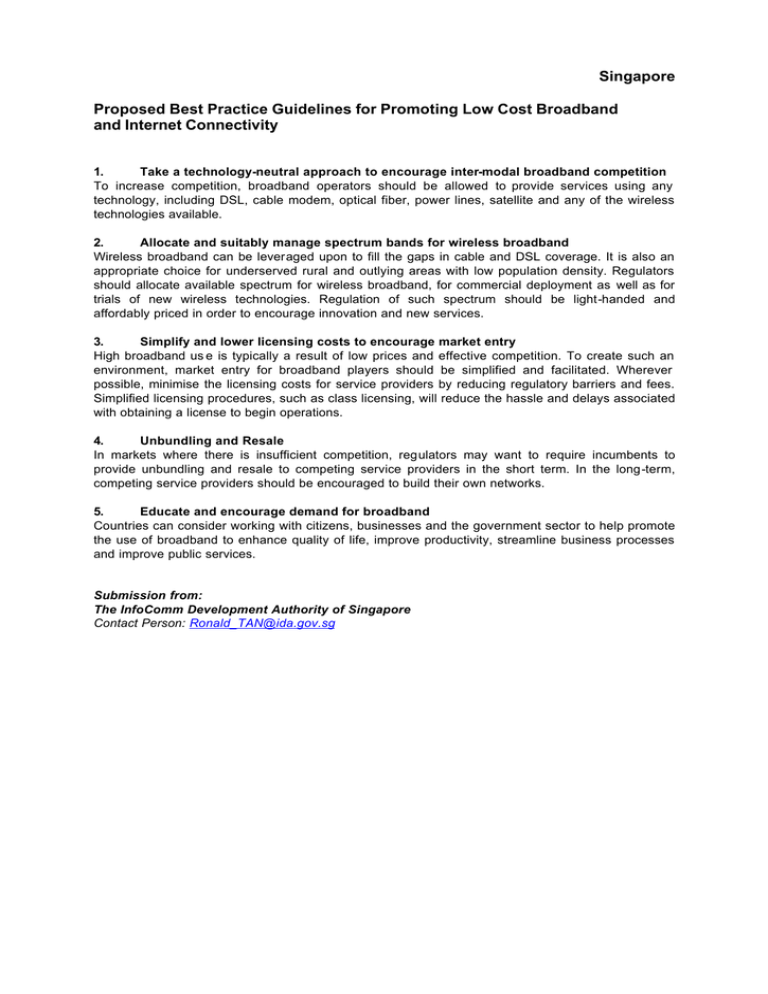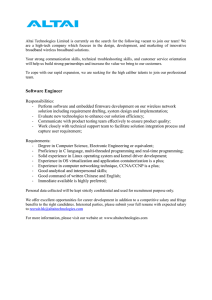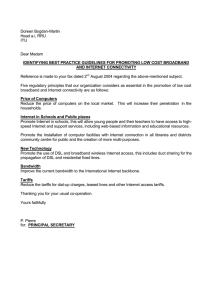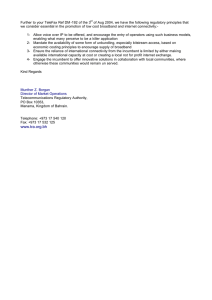Singapore Proposed Best Practice Guidelines for Promoting Low Cost Broadband
advertisement

Singapore Proposed Best Practice Guidelines for Promoting Low Cost Broadband and Internet Connectivity 1. Take a technology-neutral approach to encourage inter-modal broadband competition To increase competition, broadband operators should be allowed to provide services using any technology, including DSL, cable modem, optical fiber, power lines, satellite and any of the wireless technologies available. 2. Allocate and suitably manage spectrum bands for wireless broadband Wireless broadband can be leveraged upon to fill the gaps in cable and DSL coverage. It is also an appropriate choice for underserved rural and outlying areas with low population density. Regulators should allocate available spectrum for wireless broadband, for commercial deployment as well as for trials of new wireless technologies. Regulation of such spectrum should be light-handed and affordably priced in order to encourage innovation and new services. 3. Simplify and lower licensing costs to encourage market entry High broadband us e is typically a result of low prices and effective competition. To create such an environment, market entry for broadband players should be simplified and facilitated. Wherever possible, minimise the licensing costs for service providers by reducing regulatory barriers and fees. Simplified licensing procedures, such as class licensing, will reduce the hassle and delays associated with obtaining a license to begin operations. 4. Unbundling and Resale In markets where there is insufficient competition, regulators may want to require incumbents to provide unbundling and resale to competing service providers in the short term. In the long-term, competing service providers should be encouraged to build their own networks. 5. Educate and encourage demand for broadband Countries can consider working with citizens, businesses and the government sector to help promote the use of broadband to enhance quality of life, improve productivity, streamline business processes and improve public services. Submission from: The InfoComm Development Authority of Singapore Contact Person: Ronald_TAN@ida.gov.sg



